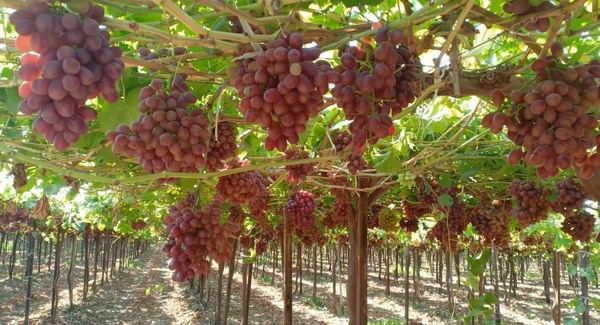The Egyptian grape season has been rather challenges, one exporter states. The weather conditions caused production to drop by as much as 40 per cent, which in turn led to prices being higher as demand didn’t decrease.
 According to Mostafa Ali, Senior Regional manager of Nile Establishment for International Trade, The Egyptian grape season has been a rough one this year: “For grapes, this season has been a very challenging season overall with, good movement in the market and opportunities are there due to shortage of supply. The major challenge was the fact that there is less production compared to the previous years. Weather conditions are the main reason for this, as it affected the cultivation and resulted in up to 30 to 40% less production. Of course, it has an impact on the cost calculations to compensate apart of these losses to the growers. In addition, the shortage did lead in a good figure of prices in the different markets like EU, Far East and Africa.”
According to Mostafa Ali, Senior Regional manager of Nile Establishment for International Trade, The Egyptian grape season has been a rough one this year: “For grapes, this season has been a very challenging season overall with, good movement in the market and opportunities are there due to shortage of supply. The major challenge was the fact that there is less production compared to the previous years. Weather conditions are the main reason for this, as it affected the cultivation and resulted in up to 30 to 40% less production. Of course, it has an impact on the cost calculations to compensate apart of these losses to the growers. In addition, the shortage did lead in a good figure of prices in the different markets like EU, Far East and Africa.”

Ali states that demand was higher than the supply was, meaning some growers could not fulfill all orders. “Most of Egyptian growers and exporters have a real shortage and couldn’t able to fulfill the requirements of volumes to the supermarkets at the start of the season. That was within weeks 20/21/22/23. Prices are high and more stable with a good demand in EU and Far East markets. There are less opportunities of supplying white and red varieties. So, we could say demand is higher than the supply. Our main markets are, The Netherlands, Germany, UK, Sweden, Denmark, Belgium, Malaysia and Hong Kong.” He concludes.
For more information:
Mostafa Ali
Nile Establishment for International Trade
Tel: +20 100 735 0313
Email: M.Ali@nilefruit.com
